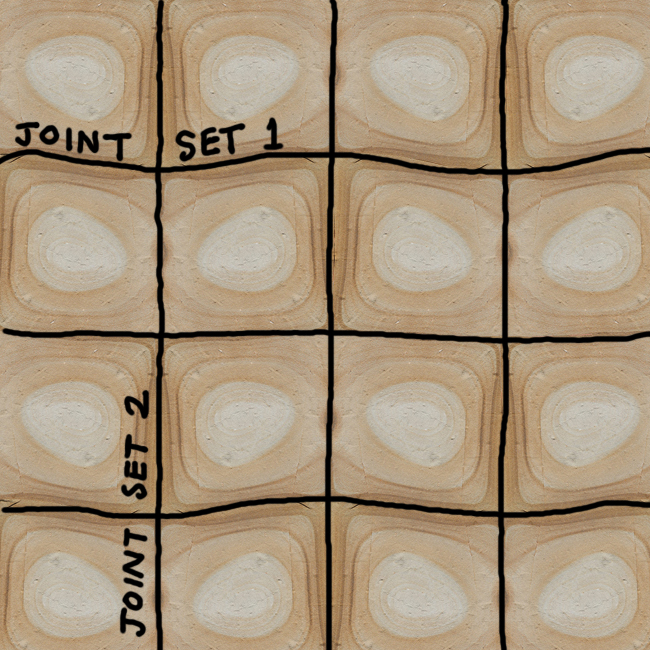I found this nice specimen in the field last Friday:

It’s a slab of sandstone, defined by two mutually-perpendicular bedding-perpendicular joint sets. This square “tile” that evidently saw repeated episodes of soaking by groundwater, as evidenced by the Liesegang banding (iron oxide deposits that accumulate at the “soaking front” resulting in distinctive concentric ring patterns, increasingly circular toward the interior. The center-most one looks a bit like an Easter egg – apropos for today!
Here are two presentations of a GIGAmacro I made of the slab:
Link 0.65 Gpx GIGAmacro by Callan Bentley
If these repeated soakings bolster the sandstone with their additions of iron oxides, one result is that a network of similarly effected tiles may weather out in a “box” like pattern, a phenomenon known as boxwork. Like this:

(Thank you, Photoshop!) …Imagine the reinforced cracks, stiff with rust, holding up to the onslaught of weathering while the light centers get etched out into a series of little cubicles. That would be boxwork.
Fluids can soak into solid rock, especially something porous and permeable such as a sandstone, but this slab clearly shows that it’s easiest for those fluids to flow along fractures in the rock; the same fractures that make up the modern edges to the “tile.”
